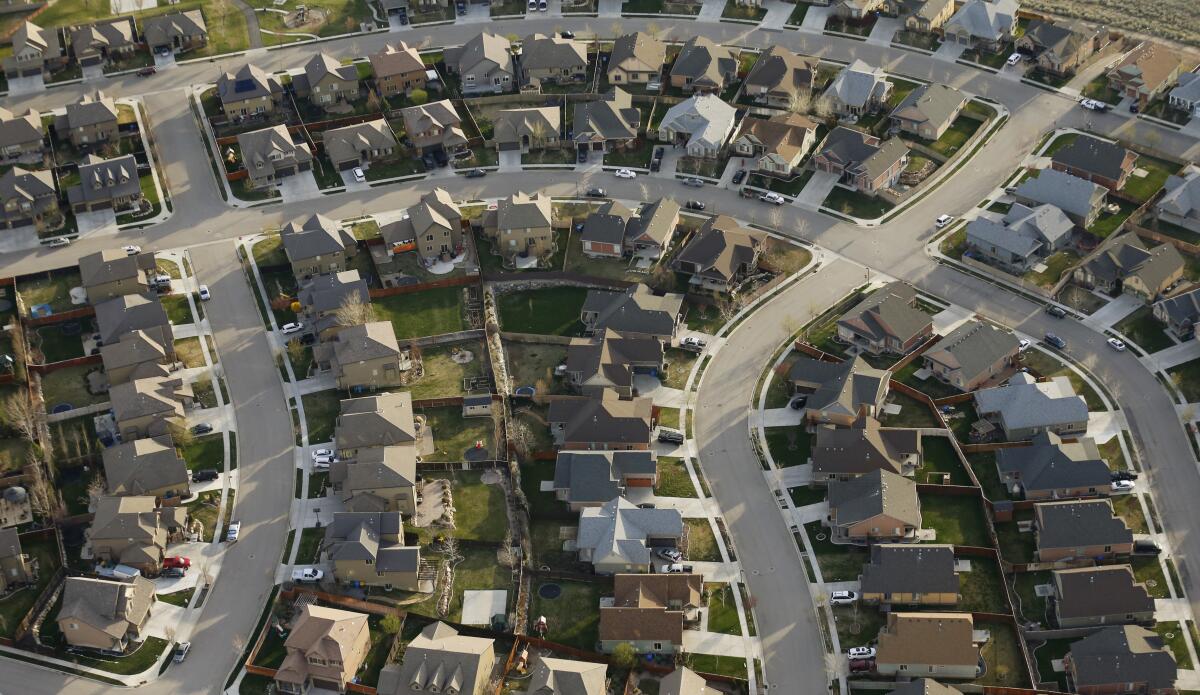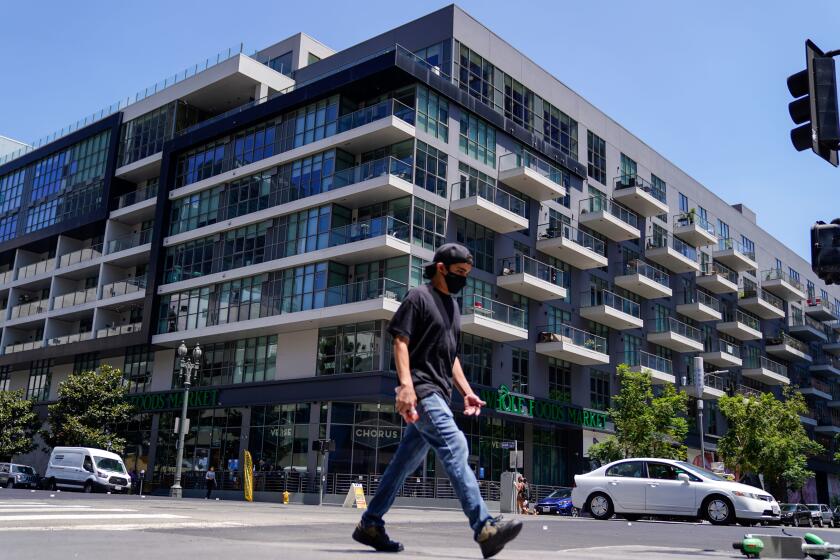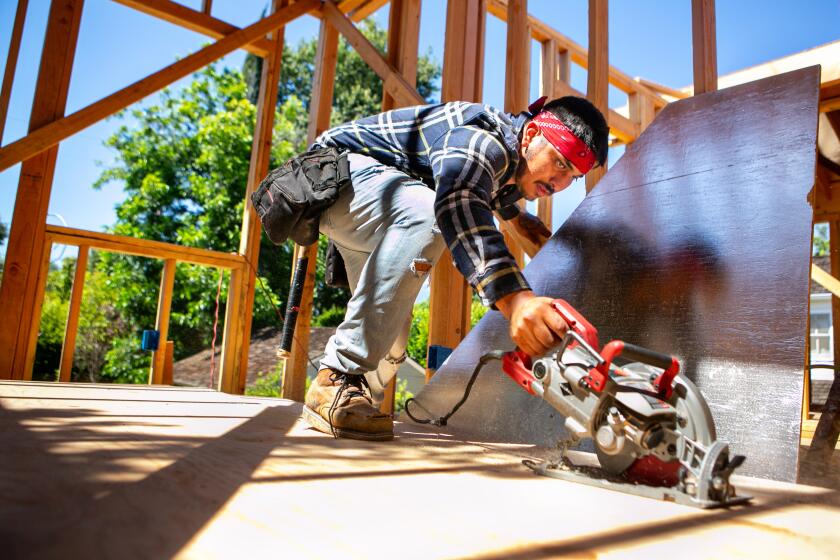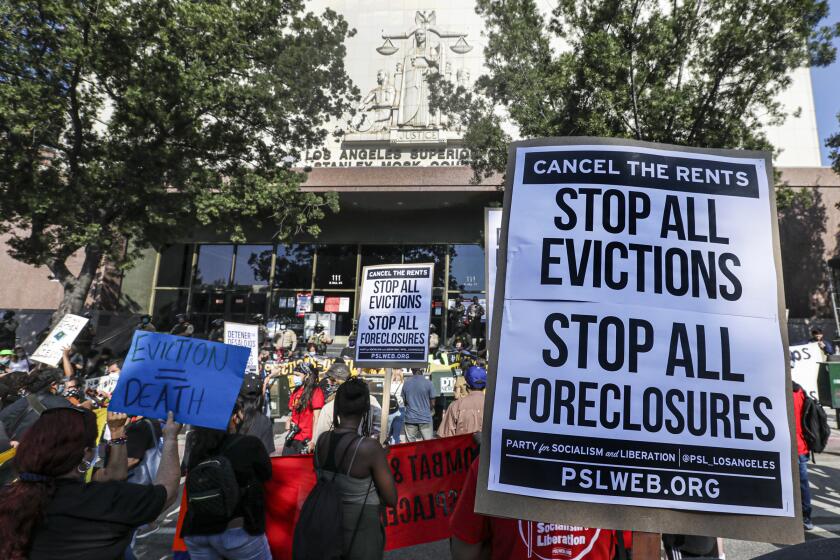Millions fear eviction as housing crisis worsens

NEW YORK — More than 4 million people say they fear being evicted or foreclosed upon in the coming months just as two studies released Wednesday have found that the nation’s housing availability and affordability crisis is expected to worsen significantly following the pandemic.
The studies come as a federal eviction moratorium is set to expire at the end of the month. The moratorium has kept many tenants owing back rent housed. Making matters worse, tens of billions of dollars in federal emergency rental assistance — intended to solve the problem — have not reached most tenants.
The housing crisis, the studies found, risks widening the gap between Black and Latino households and and white households, as well as putting homeownership out of the reach of lower-income Americans.
The reports were released on the same day as the Census Bureau’s biweekly Household Pulse Survey came out. It showed that nearly 4.2 million people nationwide reported that it was likely or somewhat likely that they would be evicted or foreclosed upon in the next two months.
Many of those tenants are waiting to see what becomes of the Centers for Disease Control and Prevention measure, which is set to expire June 30. Housing advocates are pressuring President Biden’s administration to extend it. They argue that extending it will give states time to distribute more than $45 billion in rental assistance and protect vulnerable communities from the coronavirus. The rental assistance has been slow to reach tenants.
“The latest data confirm two things — emergency rental assistance is very slow to reach renters in need, and millions of renters remain behind on rent and at heightened risk of evictions,” Diane Yentel, president of the National Low-Income Housing Coalition, said in an email interview.
With California’s economy reopening, rent in Los Angeles and other big cities is beginning to rise.
Among those confronting the June 30 deadline is Victor Richardson. The 78-year-old, who is disabled and uses a wheelchair, is facing eviction from his $2,500-a-month assisted living center in Tucson, Ariz., and has a court hearing early next month.
“We have been successfully fighting this, and I’ve come to believe we are going to come out of this victoriously,” said Richardson, who housing advocates said would not be admitted to a homeless shelter because of his disability.
The reports by Harvard University and the National Assn. of Realtors come from different perspectives but ultimately reach the same conclusion: The United States isn’t building enough housing to address population growth, causing record-low home availability, and rising home prices are putting homeownership out of reach of millions of Americans.
Without substantial changes in homebuilding and home affordability, both reports say, the result will be a more-or-less permanent class of renters contrasted with what will likely be a mostly white class of homeowners. Although these problems were known before the coronavirus pandemic, the economic impact of the pandemic exacerbated the problem, the reports say.
Lumber prices quadrupled, leading to sticker shock — and some stalled and canceled projects — for homeowners and developers.
“These disparities are likely to persist even as the economy recovers, with many lower-income households slow to regain their financial footing and facing possible eviction or foreclosure,” researchers at Joint Center for Housing Studies at Harvard University wrote.
A separate study commissioned by the National Assn. of Realtors found that the U.S. housing market needed to build at least 5.5 million new units to keep up with demand and keep homeownership affordable over the next 10 years. That’s on top of the roughly 1.2-million units built per year on average, or a roughly 60% increase in home construction for the next decade, just to keep up with demand.
“The scale of under-building and the existing demand-supply gap is enormous and will require a major national commitment to build more housing of all types by expanding resources, addressing barriers to new development and making new housing construction an integral part of a national infrastructure strategy,” wrote Kenneth Rosen, David Bank, Max Hall, Scott Reed and Carson Goldman with the Rosen Consulting Group, in its report to NAR.
The National Assn. of Realtors report points out several regions requiring more homes, including many parts of California and the West, southern Florida, and the Northeast, particularly the New York-New Jersey metropolitan area.
With eviction protections expiring at the end of June, advocates say the state needs to do more to help low-income tenants get assistance.
Without additional housing, an increasing share of Americans are likely to become renters in the coming years. Although renting has advantages including more flexibility when relocating, homeownership has been the primary driver of wealth generation in the U.S. since World War II. Home equity is often a way for Americans to have a financial safety net at times of economic trouble, as seen in the pandemic.
These problems get worse when broken out by racial backgrounds. Black and Latino homeowners have less in savings than their white counterparts. White potential homeowners also have generational wealth to potentially tap in the form of a down payment.
“The diverging circumstances between those with the resources to weather the economic shutdowns and those struggling to simply stay afloat thus widened already large inequalities in income and wealth,” said the Harvard researchers.
Outside of a massive increase in homebuilding, researchers at Harvard pointed to government home affordability programs as likely the best solution to address the problem long term.
“Any of a number of new proposals to provide down payment assistance to socially disadvantaged buyers would potentially bring millions of low-income households and households of color into homeownership.”
More to Read
Sign up for Essential California
The most important California stories and recommendations in your inbox every morning.
You may occasionally receive promotional content from the Los Angeles Times.













